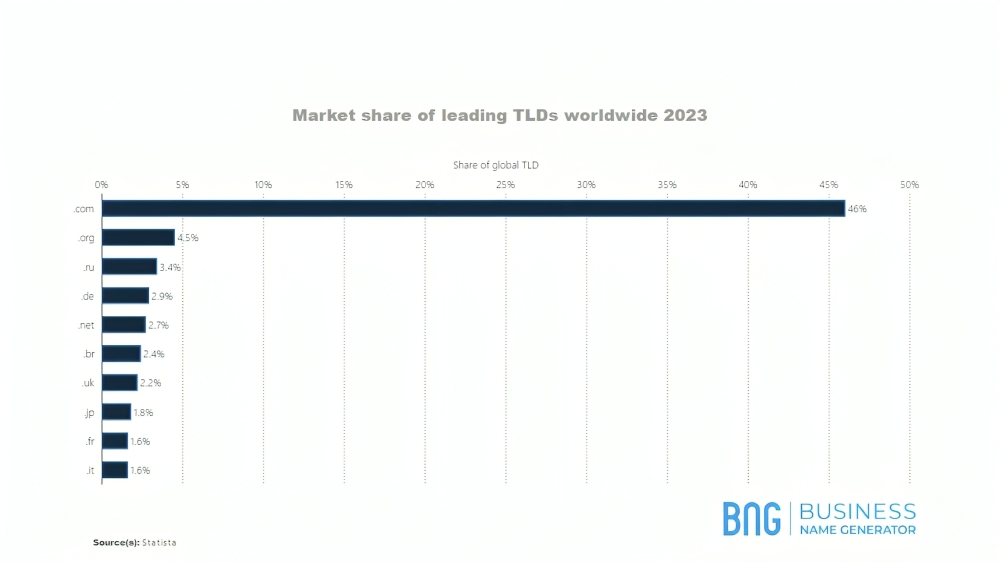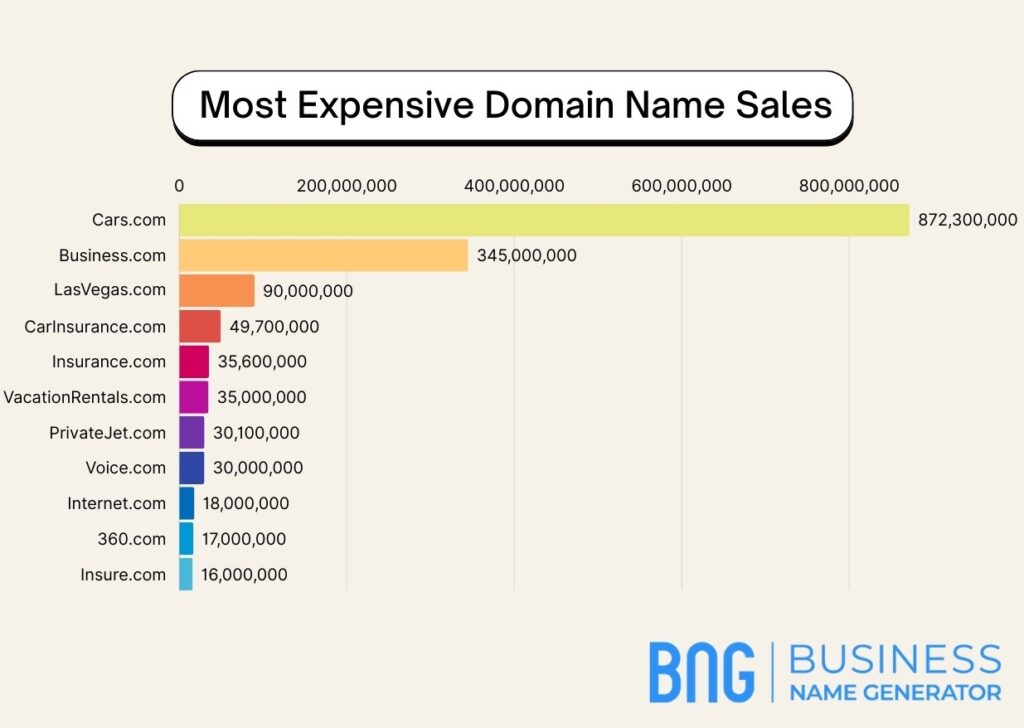Buying and Selling Domain Names
What Is Domain Flipping?
Domain flipping is the practice of buying existing, new, and expired domain names to sell them later for a higher price. Just like house flipping, it’s essentially a simple idea, but it requires some effort on your part to be successful.
You need to follow the latest domain trends and find available domain names to buy them before someone else does. You should also learn how to value a domain name and gauge whether the current selling/registration price leaves enough room for a sizable profit.
Domain flipping can be a legitimate business model. Depending on your strategy, it can be a low-cost business idea that requires an initial investment of just $10. Of course, you can buy domain names at premium prices and spend thousands of dollars. As it often is, the bigger the investment, the bigger the risk.
Reasons for Domain Flipping
The main reason to do it is to make a profit in the same way you’d do with stock investment. You want to buy low and sell high, and that’s all there is to it. Other reasons to do it include:
Serving a Growing Marketplace
Domain flipping is a viable business because the interest in registering a domain name is ever-growing. According to Verisign, there were 359.3 million registrations in Q3 2023 alone.
Demand Is High
It’s difficult to choose a domain name that’s brandable, catchy, and easy to spell. Aside from personal websites, every company takes a domain name even before it becomes a profitable business.
Many businesses also register several domains at once to avoid cybersquatting or getting their brand confused with another organization. For example, when Facebook switched to Meta, the company registered more than 280 names that contained the word.
When you find a brandable domain name that might interest various parties, you can register it and set a high price for its usage rights.
How to Flip a Domain: 5 Steps
Flipping a domain is a straightforward process that you can do in five easy steps:
- Find a suitable domain,
- Evaluate the price,
- Obtain usage rights,
- Find a suitable buyer,
- Sell the domain name.
1. Find a Suitable Domain
The first step is to find a domain name that’s either available or a premium one on sale. You can visit auction websites to see what’s on offer.
Alternatively, spend less money on registering an unused domain name. Try using keyword research tools to see what words have high search volumes.
If you can’t come up with a memorable name to flip in the future, use our AI-powered domain name generator and get 1,000+ catchy ideas to use for your portfolio.
2. Evaluate the Price
In house flipping, there’s a 70-percent rule, which states that you shouldn’t pay more than 70% of the after-repair value. While you won’t be fixing your domain’s plumbing, you should make sure you’ll be able to flip the name for at least a 30% greater price.
There are a number of factors you should consider when evaluating a domain name, such as:
- Domain type,
- Name length,
- Brandability,
- Content history (when buying an existing domain),
- Search-friendliness,
- Niche relevance,
- SEO ranking (when buying an existing domain),
- Avoiding any trademark infringement.
3. Obtain Usage Rights
If the domain name is already in use, you can find the current owner’s contact information by looking up the website’s data in the domain name system (DNS). If it’s available, all you need to do is register it. Check out our video to learn where to buy a domain name:
4. Find a Suitable Buyer
Now it’s time to find someone to sell to. You can list your domain names on the same auction websites where you find domains to flip.
If you want to be more proactive, you can create a dedicated website where you can promote and list all your domains, as well as employ some marketing strategies to reach a larger audience.
Once you find an interested party, make sure to remove the listing from other platforms.
5. Sell the Domain Name
The final step is to transfer your domain name to its new owner. Sign an agreement to ensure that everything goes as expected.
Many auction websites offer free transfer services. If yours doesn’t, or if you’ve made a direct sale, you can find a third-party service, such as Escrow.com, that will help you with the process.
What is Domain Drop Catching?
Domain drop catching, also known as domain sniping, is the practice of registering a domain name immediately after its subscription expires.
When the owner of a domain fails to renew their registration, the domain name goes through several phases (such as redemption and grace periods) before it becomes public again. Once it does, anybody can register it and become a new owner.
Drop catching revolves around constantly following domains that are close to expiry and registering them before anybody else. You can find many drop-catching tools and services to automate the process.
Drop catching can be of great value as you can register a domain name with great SEO, backlink, and brand value. This will make it easier to sell it for a greater price.
How to Identify Valuable Domains for Flipping
If you’re looking to flip a domain easily and for a sizable profit, it’s best to find a domain name that uses a popular top-level domain (TLD). A TLD is represented by the last part of the domain that comes after the last dot.
For example, .com, .net, .org, and .co are some of the most popular domain types out there, with .com being by far the most sought-after type. In fact, according to Statista, dot-com domains accounted for 46% of all global domains in December 2023. The next most popular extension is .org, with a 4.5% share.

You should also monitor trending TLDs. Many country-code TLDs (ccTLDs) today have a global use and have registrants all over the world. For instance, startup and AI-based companies often opt for .io and .ai domains instead of a more generic one.
Aside from the TLD, you should also look for short, one-word domains that are brandable and can be of value to businesses. If you’d owned Meta.com when Zuckerberg decided to rebrand, you could have been a rich man by now.
However, the brandability aspect is key. If you look at our domain name, it contains three words and is on the longer side, but you know exactly what we’re about. Having a meaningless domain name just for the sake of brevity may backfire.
For example, at the time of writing, Flippa listed Tpfs.com for just $1, whereas UFODisclosures.com had an asking price of $300 million.
Pros and Cons of Domain Flipping
As is the case with every business model, there are advantages and disadvantages to domain flipping. Although it can be a great way of making money, it’s speculative in nature, and your investment can turn out to be a bust.
Check out the table below to learn the pros and cons of domain flipping:
| Pros | Cons |
|---|---|
| Small initial investment | Potential blacklisting issues |
| Great margins | Copyright or trademark infringement |
| No technical knowledge needed | Unrealistic initial valuations |
| Easy to scale | Hard to predict profit margins |
| Doesn’t take too much time | Potential loss of money |
Real-World Examples of Successful Domain Flips
The average price of a flipped domain is about $2,500, with the average flipper earning between $100 and $10,000. If you want to go into it, don’t expect to rake in millions of dollars every month.
However, there are instances where sellers hit it big and managed to make a fortune by flipping a valuable domain.
Domains that are short, brandable, and have a .com extension tend to bring the most value to sellers. The following domain names represent the biggest sales of all time:
- Insure.com: $16 million,
- 360.com: $17 million,
- Internet.com: $18 million,
- Voice.com: $30 million,
- PrivateJet.com: $30.1 million,
- VacationRentals.com: $35 million,
- Insurance.com: $35.6 million,
- CarInsurance.com: $49.7 million,
- LasVegas.com: $90 million,
- Business.com: $345 million,
- Cars.com: $872.3 million.

Takeaway Points
Domain flipping is just like any investment in which you only plan to sell later for a profit. The difference is that instead of buying stocks or cryptocurrency, you invest in domain names.
You’re banking on the idea that a business will find the name you’ve registered worth the price you’re looking for instead of registering an available domain name on its own. It can be a great side hustle in the beginning and develop into a proper business once the money gets rolling.
If you’re not a domain name expert and don’t know what makes a name profitable, use our domain name generator to get inspired and find catchy names that are available for registration.